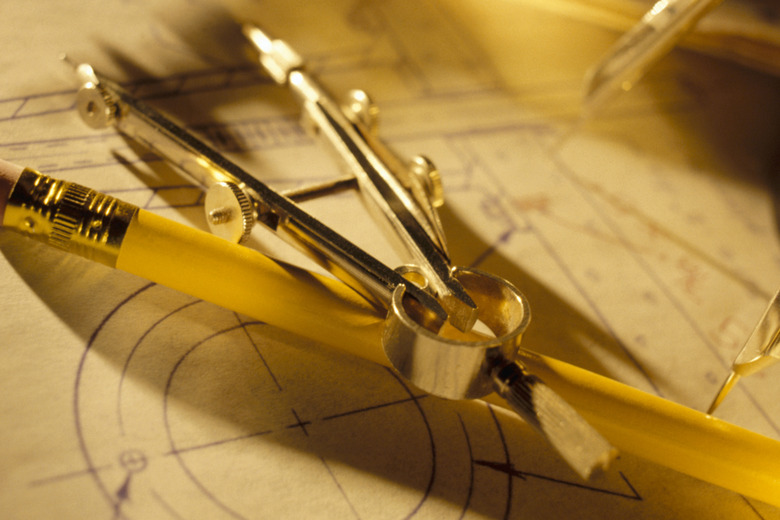How To Make A Compass At Home For Geometry
Arcs and circles are easiest to draw with a compass in your hand. The compass from geometry class is not, however, always available when you need to draw a perfect circle. The solution is to construct a compass from items found around the house. The perfect circle can be generated with little more than a pencil, a piece of string and a pin. Homemade compasses are not size-constrained as many geometry compasses are. Your homemade compass can be adapted to produce circles many feet in diameter as easily as it can be used to complete your geometry homework.
Step 1
Tie the one end of the string to the pin with a knot. Sewing thread is a lightweight alternative to the heavier string. The length of the string should be no longer than 4 inches for drawing circles on letter-sized paper. For larger paper sizes, use a string length that is approximately half the length of the shortest side of the paper.
Step 2
Tie the other end of the string to the pencil about an inch from the pencil point. The pencil must be pointed downward, so the pencil tip is closest to the paper.
Step 3
Push the pin into the middle of the paper. The pin marks the center of the circle that you will draw with your homemade compass. Hold the pin in place by pressing down on the pinhead using the forefinger of your left hand. If you are left-handed, use the forefinger on your right hand to secure the pin.
Step 4
Position a ruler so that the first ruler marking or the zero-point is next to the pin. The ruler must point toward the edge of the paper. It does not matter which edge it points to.
Step 5
Move the pencil away from the pin until the string is taut. Rotate the string around the pin until the string lines up with the ruler edge.
Step 6
Roll the pencil between the thumb and forefinger of the hand holding the pencil. The string will shorten as it wraps around the shaft of the pencil. Continue rolling until the length of string matches the radius of the circle you wish to draw.
Step 7
Lower the pencil point onto the paper and draw a circle. The string must remain taut until the circle is complete. Do not allow the pencil to lean. It must remain upright while drawing the circle.
Things Needed
- Pin
- Pencil
- String
- Ruler
- Paper
Cite This Article
MLA
Lewis, Pearl. "How To Make A Compass At Home For Geometry" sciencing.com, https://www.sciencing.com/make-compass-home-geometry-12082521/. 24 April 2017.
APA
Lewis, Pearl. (2017, April 24). How To Make A Compass At Home For Geometry. sciencing.com. Retrieved from https://www.sciencing.com/make-compass-home-geometry-12082521/
Chicago
Lewis, Pearl. How To Make A Compass At Home For Geometry last modified August 30, 2022. https://www.sciencing.com/make-compass-home-geometry-12082521/
